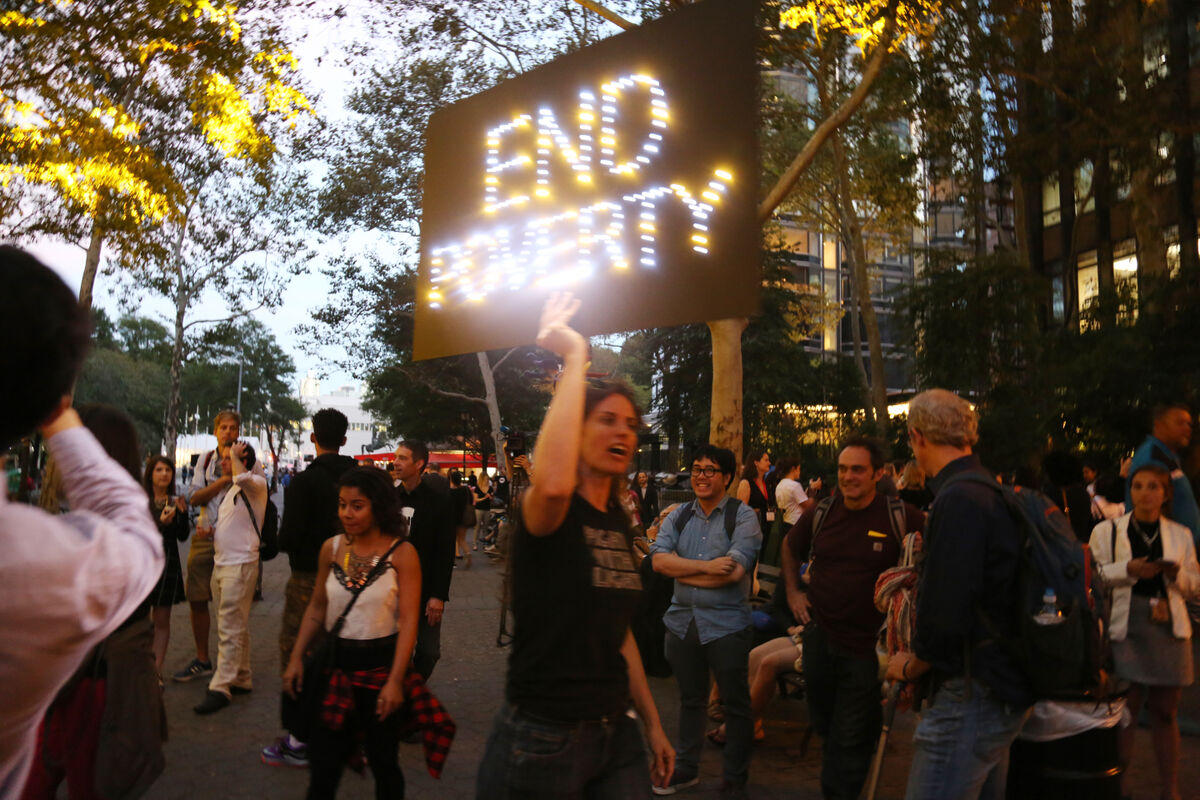Activists and campaigners on the eve of the Sustainable Development Goals Summit in New York (Photo: Marisol Grandon/Department for International Development UK / flickr)
In the year 2000, 189 member states of the United Nations together with numerous international organizations committed themselves to reach eight different MDGs by 2015 in order to reduce poverty in its multiple dimensions (United Nations: We can End Poverty. Millennium Development Goals and Beyond 2015). With three out of eight goals specifically focusing on the reduction of child mortality, improvement of maternal health and combating infectious diseases, the MDGs had a strong emphasis on health and were guided by a traditional development approach with a focus on low-income countries (The Millennium Development Goals Report 2015, pdf).
The Millennium Development Goals: prospects and realities
As reported by representatives of Swiss NGOs and CSOs the MDGs provided common goals and a common language in the past, which were particularly useful to create new partnerships, to foster joint discussions, as well as to mobilize funds. However, some of the organizations voiced that the focus of the MDGs, including their indicators, were too narrow in nature while certain topics – e.g. such as disabilities – were not specifically emphasized. NGOs further highlighted that no tool or common guidance existed for NGOs on how to actually use the MDGs – a fact also of interest for the coming SDGs.
During the discussion certain tensions within the MDGs were also identified, such as those between outcomes, which were rather primary in nature and processes itself, which had a weaker position within the MDGs. When reporting on the ending of the MDGs it was noted that very weak attention was given to equity: among sub-groups, such as women, children, rural and urban populations.
A paradigm shift: the Agenda 2030
With the ending of the Millennium Development Goals in 2015 The Millennium Development Goals Report 2015, pdf) the UN General Assembly together with 193 governments adopted the 2030 Agenda for Sustainable Development Goals (Transforming our World: The 2030 Agenda for Sustainable Development) replacing the former MDGs.
The SDGs differ greatly from the MDGs: With a total of 17 different targets ranging from topics such as health to poverty, energy, infrastructure, sustainable consumption and peaceful societies for example, the new goals acknowledge that challenges to address in our world are diverse, wide-ranging and yet thematically and geographically interlinked.
While some NGOs and CSOs in Switzerland have already started to engage with the SDGs others have not. One of the major challenges constitutes the current lack of indicators which are required for active planning. The strategic set-up of future partnerships was perceived as a necessity – due to the fact that the SDGs are defined very broadly – but also a challenge. Organizations acknowledged that the goals clearly require liaising and working among different sectors and thinking out-side the box in order to adequately tackle the many challenges. Swiss organizations highlighted that cross-sectoral collaboration and cooperation may be stimulating but may at the same time be challenging.

Glenn Laverack (WHO) at the MMS Symposium (Foto: Christoph Engeli / MMS)
Requirements for implementation of the new SDG framework
During the discussion the need for a common and overarching guidance was voiced on how to engage with and address the SDGs in future. The development of a code of conduct and tool was proposed to further engage in discussion and to more easily identify mechanisms e.g. for joint planning or budgets to work among different sectors. Further, to strengthen the common language and build bridges, given the involvement of many different sectors, collection, analysis and reporting on disaggregated data is needed more than ever.
In conclusion the SDGs will only be achieved if we work in partnerships and overcome thematic and geographical boundaries. Governments will be held accountable for reaching the targets with the support of the international community. The role of CSOs will be crucial to advocate for policy requirements, to monitor progress and to raise awareness on the progress of the Agenda 2030. The MMS symposium was ahead of its time in order to draw clear conclusions on how to best integrate and work with this new framework as the new Agenda 2030 was only recently introduced. A central element was missing: the indicators on how to measure the new targets set for 2030.
References:
- United Nations (n.d.) We can End Poverty. Millennium Development Goals and Beyond 2015: http://www.un.org/millenniumgoals/ (Accessed 02.01.2016)
- United Nations New York (2015) The Millennium Development Goals Report 2015: http://www.un.org/millenniumgoals/reports.shtml
- SDG Watch (2015) Discussion Document on „SDG Watch Europe“ available upon request: http://www.beyond2015.org/sdg-watch-europe-provisional-title
- United Nations (2015) Transforming our World: The 2030 Agenda for Sustainable Development: https://sustainabledevelopment.un.org/post2015/transformingourworld



